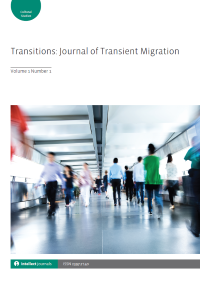
Full text loading...
 , Jingqiu Ren1
, Jingqiu Ren1
Confronted with restrictive visa policies, deteriorating US–China relations and the outbreak of the COVID-19 pandemic, Chinese international students in the United States face unprecedented uncertainty in their immigration prospects. Their unique intersectional identities as temporary immigrants, prospective permanent immigrants and emerging adults modulate their migration aspirations and desires within this exceptional social context. We interviewed and surveyed a group of Chinese international students in a major American university at various stages of their stay in the United States. Using the migration aspiration and desire framework, we explore how they cope with the challenges and plan for immigration upon graduation. Our findings suggest that under the unique temporal junction of the geopolitical tension and a global public health crisis unprecedented in their lifetime, the becoming process associated with their particular identity as in-between migrants and the assemblage of various actors throughout the process help recalibrate their initial aspirations at personal and collective levels and reshape their migration desires. Although it has frustrated their migration motivations and plans, it has also endowed them with perspectives and the capacity to develop effective coping mechanisms and remain resilient.

Article metrics loading...

Full text loading...
References


Data & Media loading...

Publication Date:
https://doi.org/10.1386/tjtm_00049_1 Published content will be available immediately after check-out or when it is released in case of a pre-order. Please make sure to be logged in to see all available purchase options.